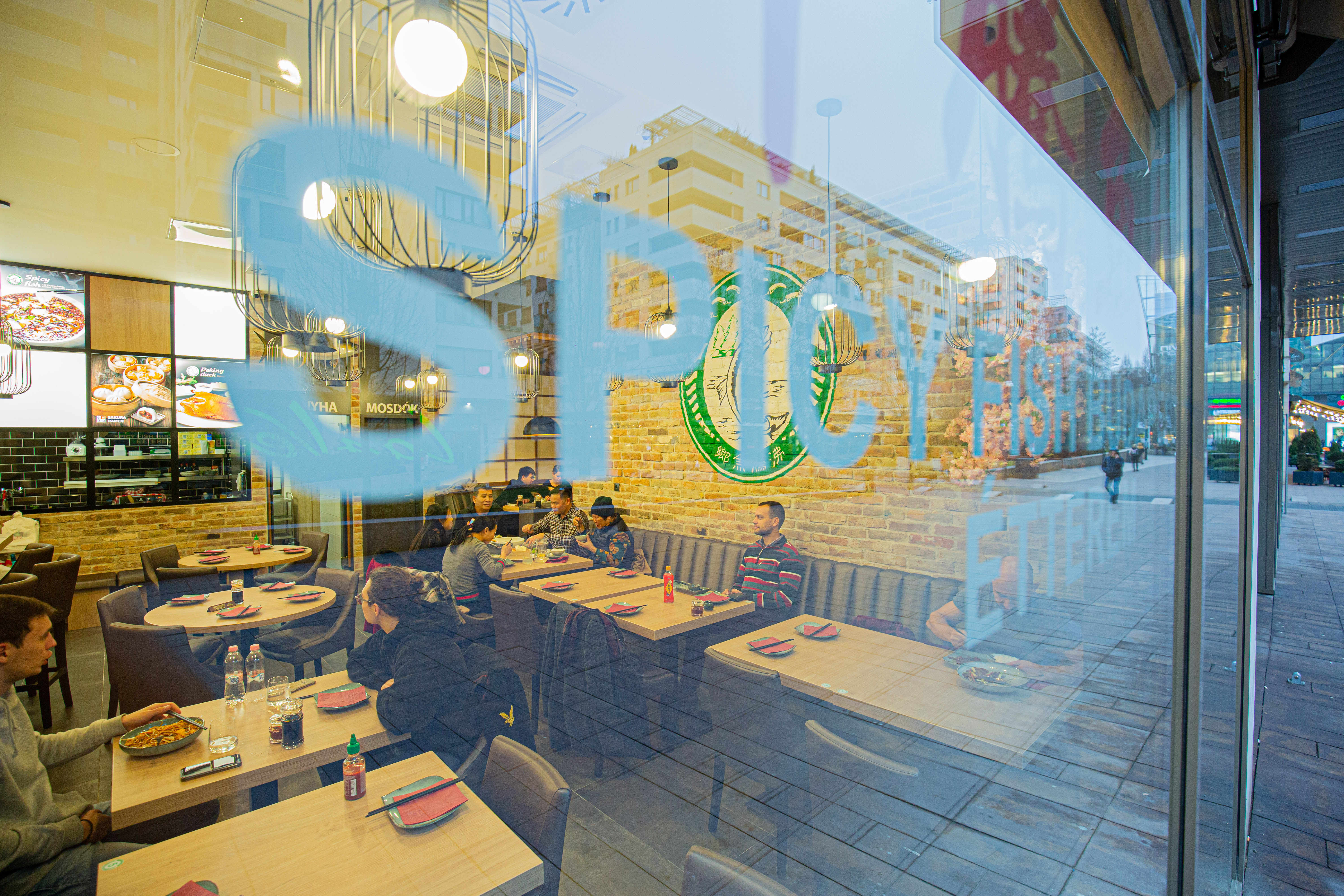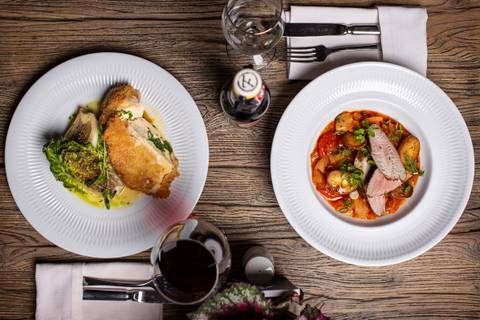Budapest has seen a revolution in quality Asian dining. It’s easy to find a decent Vietnamese, Thai or Japanese restaurant these days. This year should see even more authentic eateries open their doors. One such is Spicy Fish, long an emblematic representative of Chinese cuisine at the Monori Center in Kőbánya, which has just opened a new outlet in the Corvin Quarter.
A certain number of intrepid diners has long ventured into the deepest reaches of the Chinese Quarter in Kőbánya, the forbidden city of the Monori Center on Jegenye utca. Their quest? Authentic Chinese cuisine. For years, Spicy Fish has shone like a beacon in the Chinese Quarter, the one dining destination you could rely on for fine, authentic dishes, and the perfection introduction to a whole gamut of gastronomy. For first-time visitors, though, the task was always daunting: where to go, what to order, how to get there?

For those out of their comfort zone in Kőbánya, the new Spicy Fish outlet just opened on Corvin sétány allows them to discover real Chinese cuisine near a busy crossing point in Pest.
Spicy Fish is perhaps the first Chinese restaurant in the city centre that can double up as a place for a convivial first date. Of course, exciting, authentic Chinese eateries exist in Budapest, but often the atmosphere, the interior and the location don’t match the quality of fare on offer.

This restaurant on Corvin sétány, however, is completely modern, smart, even a tiny bit industrial – think Naples pizza parlour – and the kind of place you could sit and eat in comfort with your grandmother, say. The blossoming pink cherry tree in the corner, however kitsch it might sound, is a real hit, contrasting with the simple contemporary grey interior, letting you know that this is an Asian restaurant without interfering with your sense of aesthetics.

Another nice surprise is the menu – although photos rarely raise your hopes, you still need it for Chinese cuisine. Each name is also rendered correctly and comprehensively in Hungarian.
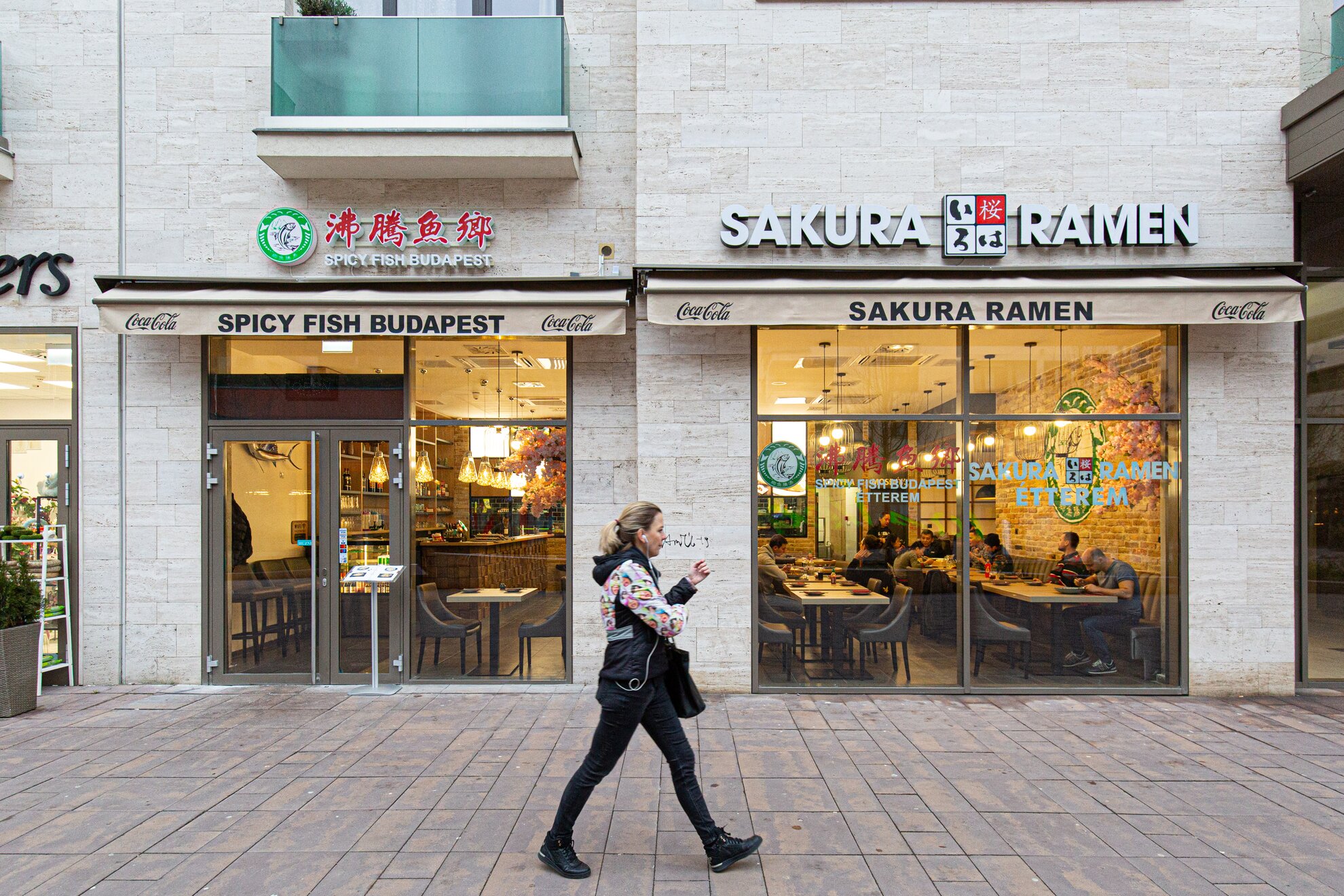
The menu is quite long and eclectic, so if you don't know in advance what to order, expect to spend an enjoyable 15 minutes browsing it, especially since Spicy Fish has partnered with next door’s Sakura Ramen. In your hands, in addition to suggestions for Chinese dishes, will be a list of 12 types Japanese ramen and even Korean bibimbap, mixed rice with meat and vegetables. And while it is usually a bad omen to feature the cuisines of multiple countries on one menu, here the kitchen takes the individual ground rules seriously enough to make this an exception.
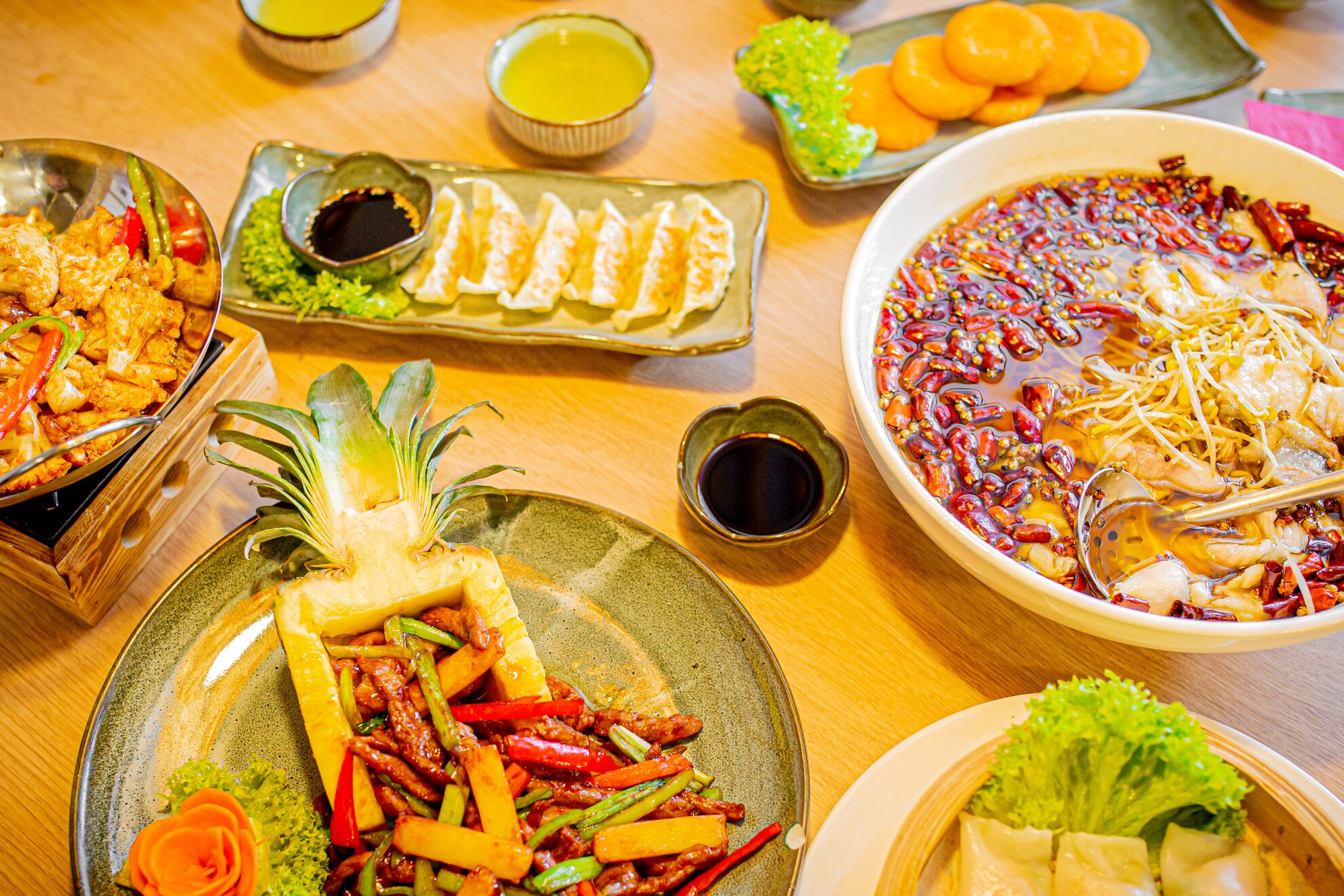
What’s most attractive is that you are guided through Chinese cuisine gently yet intelligently. Someone only slightly familiar with the genre will feel comfortable, while those happier in the deep end will have little reason to complain. Appetisers include plenty of familiar dishes: Japanese gyoza (1,090 HUF for six pieces) come in chicken or pork versions, while various steamed or fried Chinese favourites include bao buns (890 HUF for three pieces) and spring rolls (850 HUF). Lesser-known summer rolls (1,090 HUF for three pieces), very popular in Hong Kong, are a kind of shrimp-and-rice wrap.
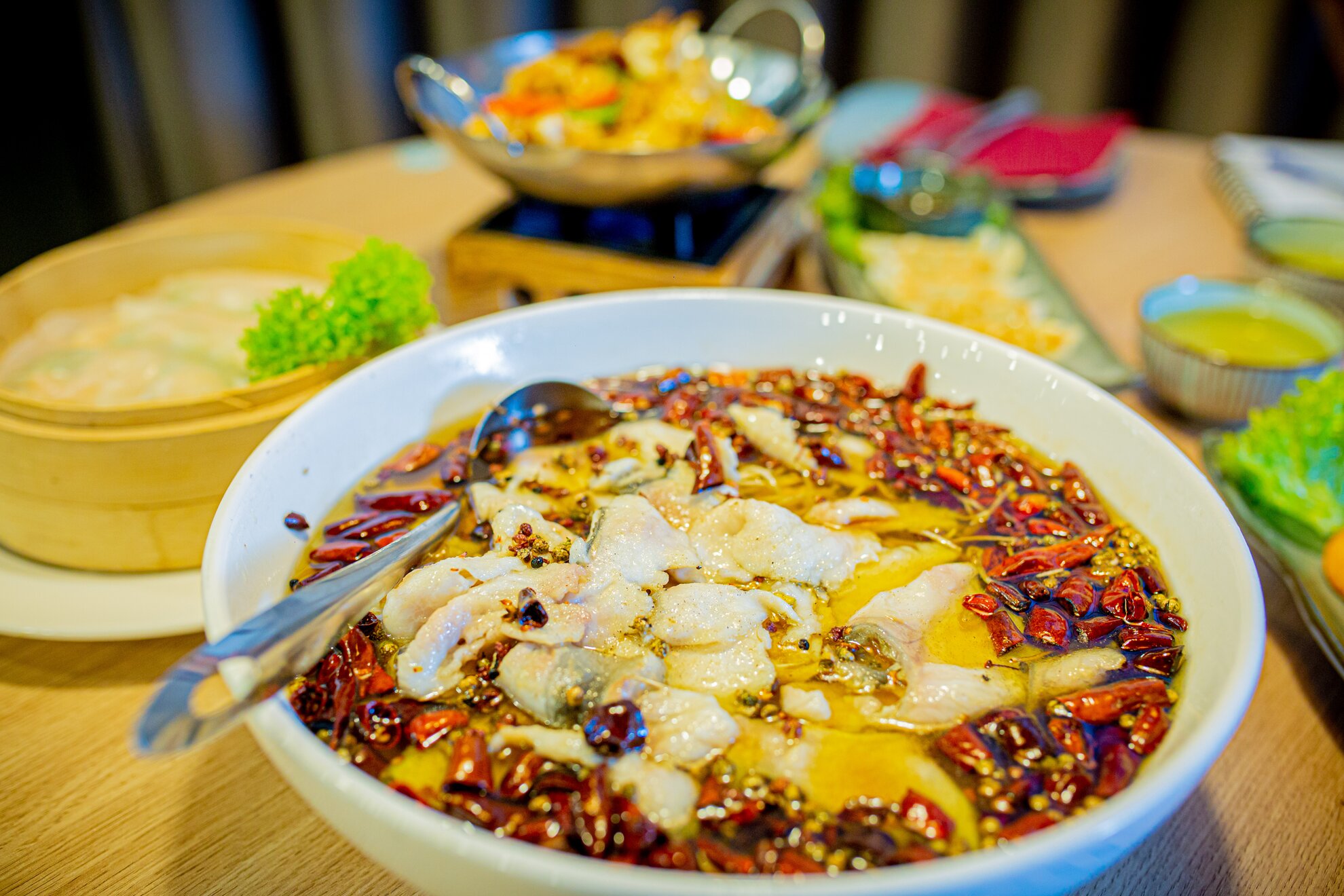
After the appetisers, you can start with dishes easy for any European to assimilate, steam into a Chinese lecsó tomato-and-pepper stew, or sample the hard-core dishes. The namesake spicy fish (4,980 HUF) is a Sichuan speciality whose name is used by as many restaurants in the province as goulash on Hungary’s Great Plain.
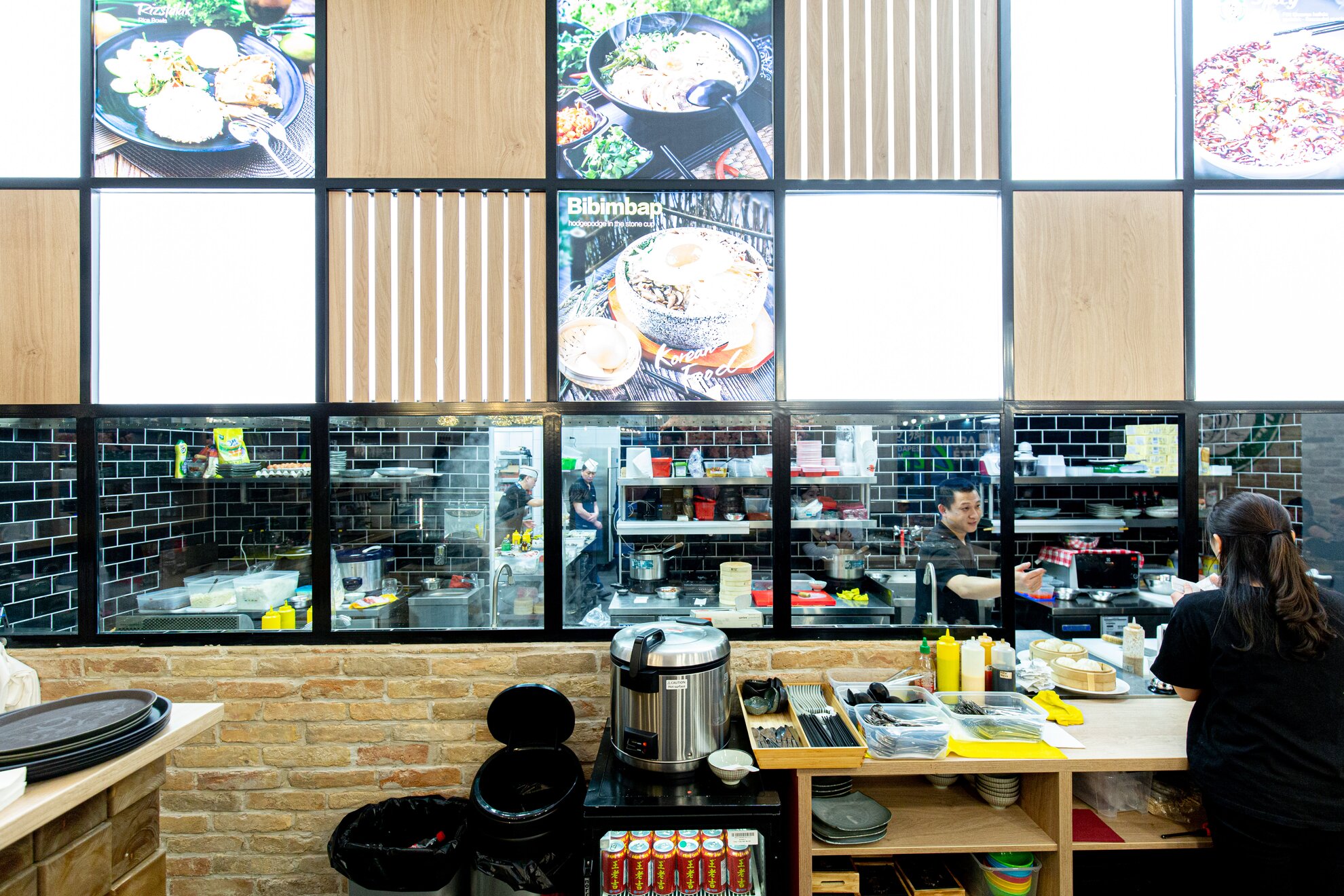
A single serving of river fish and bean sprouts comes in a huge bowl of simmering oil, full of chili and Sichuan peppers. Since most of the liquid is oil, you are offered a slotted ladle specifically for the purpose of hooking out pieces of soft fish meat, beansprouts and peppers into your smaller bowl.
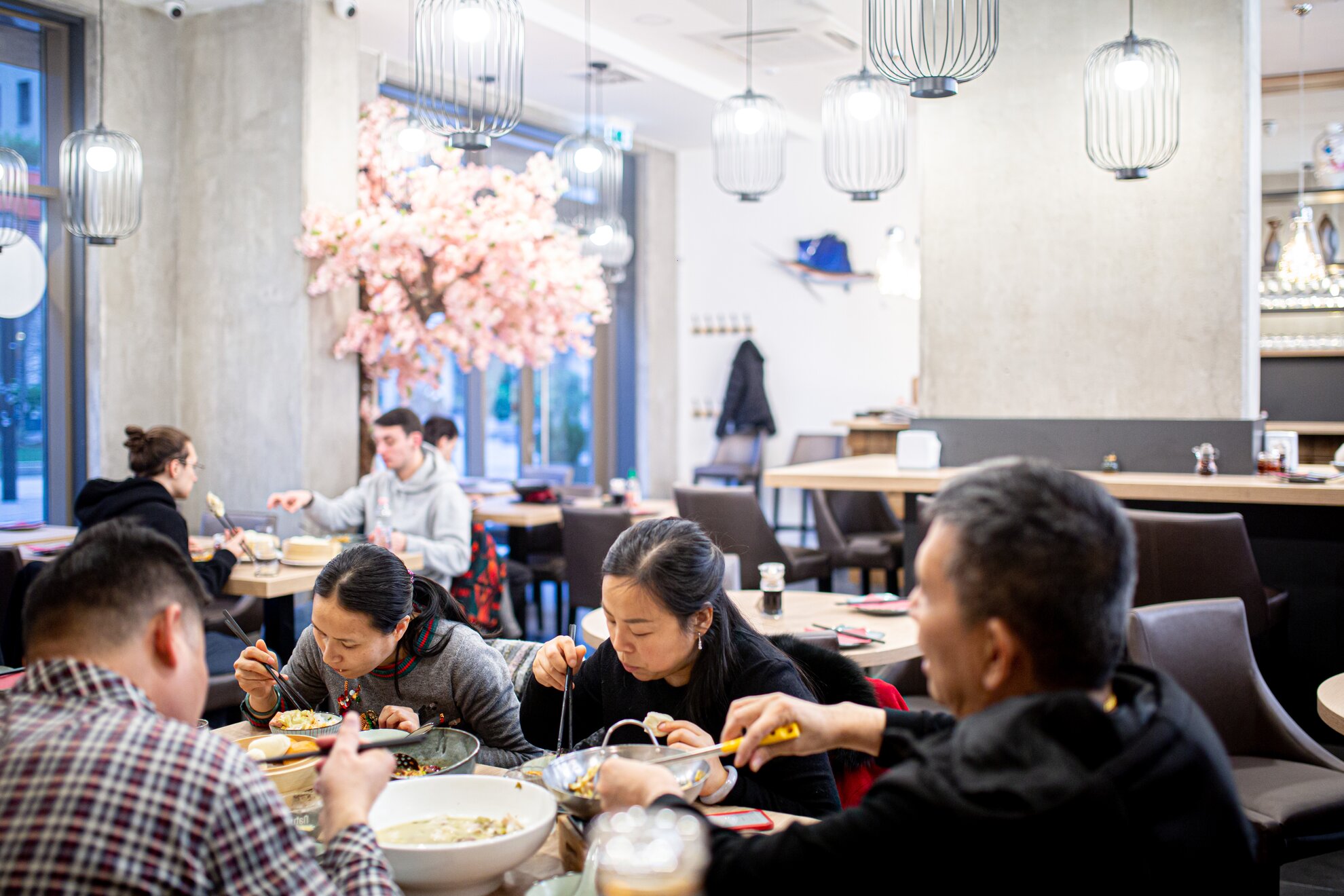
The spiciness is set to low, so 50 of the wildest Sichuan peppers won’t be floating in your soup. The fish, as in its authentic Chinese version, isn’t filleted, meaning the equally authentic experience of searching for the bones. If there’s a group of you, this is particularly worth trying, because it’s a real speciality and made for several helpings.
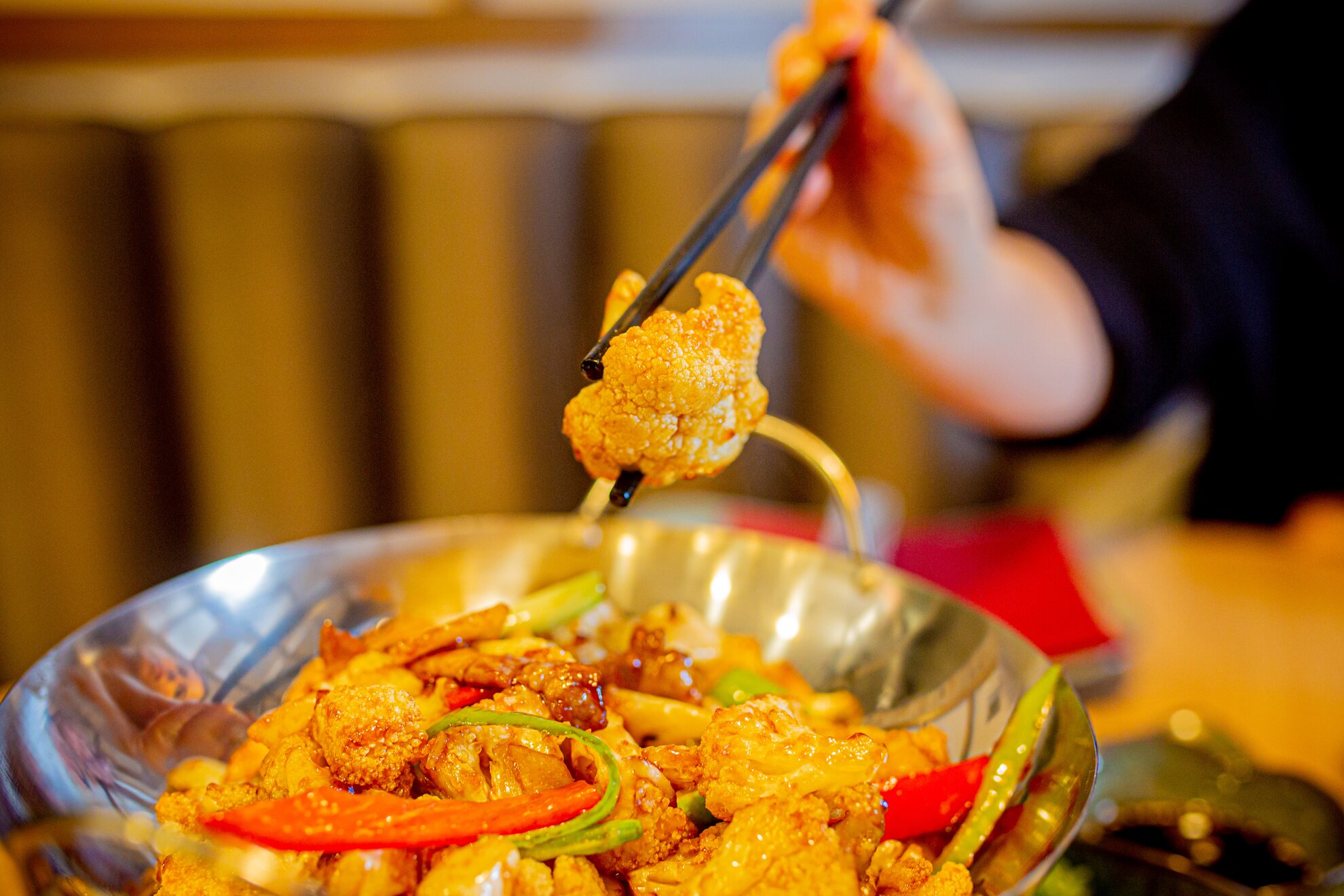
In similar vein, you’ll find the essence of the original Monori Center establishment in the mao xue wang (4,280 HUF) of duck blood, tripe and luncheon meat, or in the marinated sliced offal in chili sauce (1,980 HUF). Those who are not up for innards can ask for the ‘world-famous’ Chinese duck from Beijing (whole, 9,800 HUF).

And those more used to Chinese fast-food eateries will also feel at home – the menu is full of dishes also served there, just executed to a higher standard. That’s reason alone to visit Spicy Fish. For example, pineapple-fried beef strips (3,580 HUF) evoke the instant meals so popular here after the end of Communism, but that’s where all comparisons stop: juicy meat, abundant vegetables and pineapple fill half a cone, a world away from whatever would have been boiled in a bag 25 years ago. Here, on a plate, is what they were trying to copy way back when. Toasted cauliflower served in a mini wok (2,580 HUF) is a hot, sizzling, basically simple dish, in a sassy spicy sauce, while the udon-like Wenzhou noodles (1,990 HUF) are vegetables with minced meat in soy sauce, which even the choosiest of children would devour.
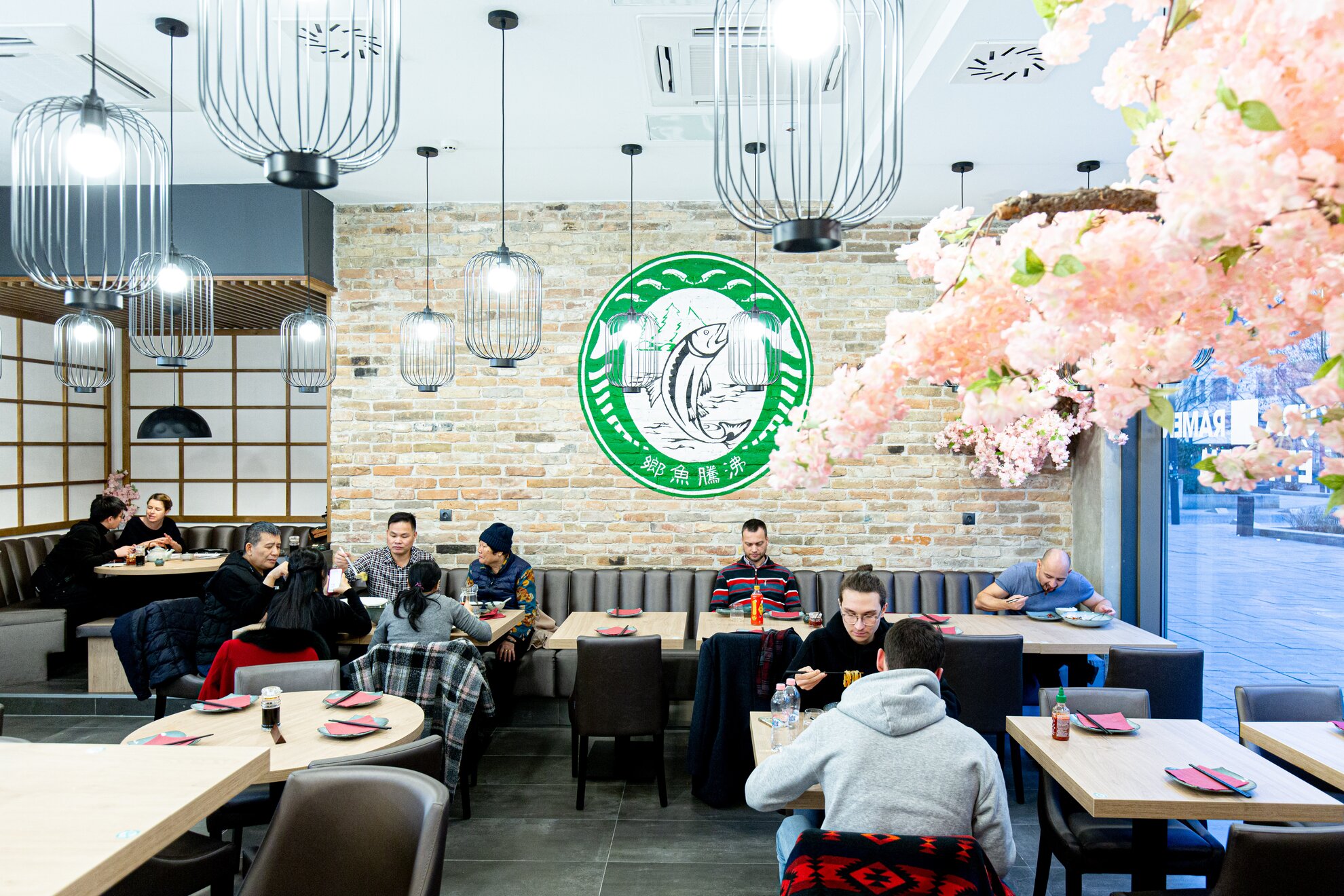
So, who should go to Spicy Fish? Actually, anyone who is in any way interested in Asian cuisine, from beginner’s to advanced, can find what they’re looking for here.
District VIII. Corvin sétány 3
Open: Daily 11am-11pm
